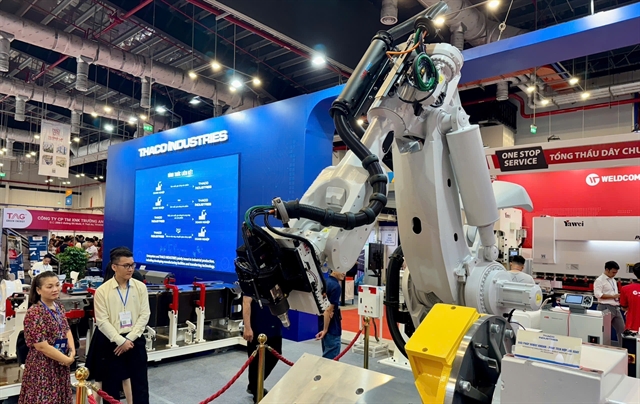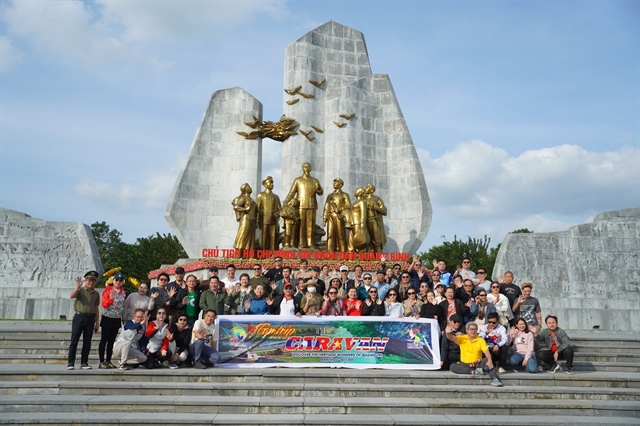 Society
Society


|
| A correspondent of Tin Tức (News) newspaper under the Vietnam News Agency interviews a woman about COVID-19. Photo baotintuc.vn |
Nguyễn Thanh Lâm, director of the Authority of Press under the Ministry of Information and Communications, talks to the Vietnam News Agency on the role of Vietnamese journalism in the fight against COVID-19.
Can you give an assessment of the efficiency of the press system in preventing and controlling the pandemic?
Over the past one and a half years since the pandemic broke out, press agencies have been very active in covering COVID news. This is the hottest topic covered by media agencies recently. News about COVID-19 accounts for 40 per cent of information in the press.
COVID news includes information on responding to the pandemic, safe living skills, the pandemic’s impacts on the economy, the policies of the Party and State to lift difficulties for businesses, and stories about businesses overcoming difficulties to maintain production and business.
Many news articles did not talk directly about the pandemic but still reflected problems in a pandemic-hit society.
In general, press agencies and reporters have made their best efforts and have defied difficulties to successfully complete the task of providing updated information to readers.
This comment is not only from the Press Authority but also from the ministry's leaders. The Central Party Committee’s Secretariat, the Government, and the Prime Minister always emphasise the role of communication in supporting pandemic prevention and control as well as in economic development.
Press agencies have gradually grown in covering the pandemic. Responding to the pandemic, reporters and the public have stayed calmer.
In the past, some news articles reported suspected cases too hastily, or over-emphasised the epidemiological risk without confirmation from authorities, sowing anxiety among the community. But reporters recently have covered the news in a balanced way and avoided sensationalising them .
The travel history of patients used to be published, affecting them and their families. Meanwhile, not all patients spread the virus. Such reporting violated their private information. Recently, the health ministry banned publishing patients’ personal information and travel history.
The press itself has also changed the way it covers infection cases. Obviously, through experience, the reporting has also gradually become professional.
News articles on COVID-19 have recently incorporated directions from the Party and the State on the pandemic prevention and control work, showing unbiased views.
The Press Authority has always worked with the press in the fight against COVID-19 and in other aspects in general. What changes have been made in the authority’s information orientation in the context of new COVID-19 developments?
The orientation of professional healthcare information will be made by the health ministry. The health ministry is responsible for releasing official information on the pandemic development and responses.
Press is part of the communication forces in the fight against COVID-19.
The Press Authority has accompanied press agencies in covering news, ensuring the dual goals set by the Government, which is to fight against the pandemic and develop the economy.
However, some provinces and cities have prioritised pandemic prevention and paid less attention to economic development. Some localities have issued restrictions that left impacts on businesses and products and affected the freedom of travelling of people in low-risk groups.
For example, when the pandemic broke out in HCM City, 25 provinces and cities have restricted entry from HCM City and asked people returning from the city to quarantine. Prime Minister Pham Minh Chính had to issue a dispatch and ordered the restrictions be lifted.
In those cases, the press must disseminate the policies and orientations of the Government so local authorities can understand the long-term pandemic fighting goals. The media must also spot shortcomings to help competent agencies make adjustments to their orders.
The press must cover not only infections but also arising problems in life and raise a voice on important aspects in COVID prevention that have received less attention.
For example, technology is considered to be important in pandemic prevention. Some people might suspect the effectiveness of technology but it must be applied widely to prove its effectiveness.
Coverage on vaccines and technology must be boosted. From our observation, the coverage rate of this topic remains low.
The Press Authority has applied tools to analyse COVID-19 topics so we know which topics are covered the most and the least to make proper guidance.
Thanks to Resolution 84 of the Government, a lot of media outlets have received support to cover the pandemic and measures to mitigate its impacts. Hopefully, the press agencies will have stories that contribute effectively to the fight against COVID in Việt Nam. VNS




